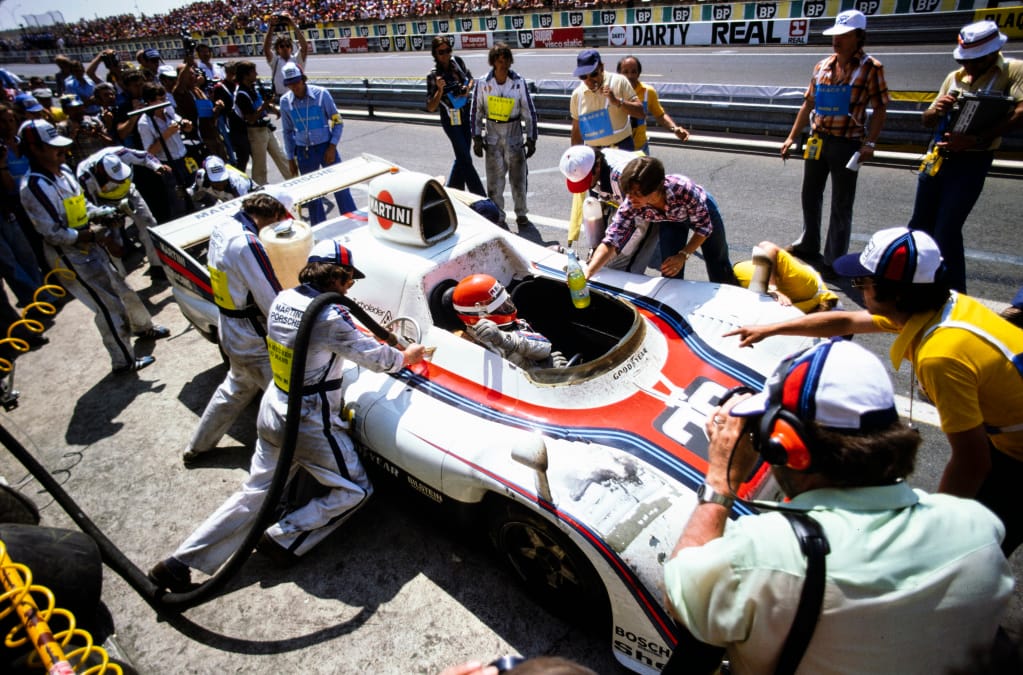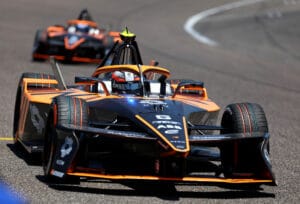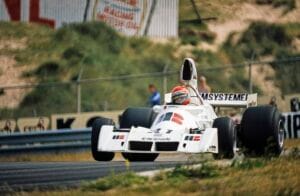This weekend marks the 24 Hours of Le Mans, a race that Gijs van Lennep (82) won twice, in 1971 and 1976. Van Lennep was a successful racer during the 1960s and 70s, a period often referred to as the Killer Years due to the numerous fatal accidents. He witnessed many friends and colleagues perish in crashes, yet he always managed to escape unscathed.
“Looking back, it was madness what we did. The fact that I can tell the tale and others can’t is due to one thing. Pure luck.”
Gijs van Lennep appreciates the significant strides Formula 1 has made in terms of safety over the past decades. It was a different story during his racing years. In the 60s and 70s alone, 26 Formula 1 drivers died in crashes. These were indeed the Killer Years. The 24 Hours of Le Mans was no exception, with cars often referred to as moving bombs – fuel tanks with a steering wheel and four wheels.
“It sounds harsh, but we didn’t know any better. I’ve seen men crash to their deaths up close. Colleagues, teammates sometimes. Hans Laine, Jo Bonnier, and a few of those Formula 1 guys. It’s a terrible loss and incredibly sad, but life always goes on, right?”
‘He flipped like a speedboat and caught fire’
The accident involving Swedish driver Laine is still vivid in his memory. They were supposed to race a 1000-kilometer race on the Nürburgring together in a Porsche 908. Laine got into the car after training to ‘roughen up’ the tires and never got out. At least, not alive. “He flipped like a speedboat and caught fire. Dead on the spot.”
Typical of the time: an hour later, the team manager approached Van Lennep. Not to seek or offer support. No, to inform him that another Porsche 917 was available and to ask if Van Lennep would still want to race the next day.
Reflecting on the Toughness of the Racing Culture
“Absolutely brutal, yes. That’s when I stepped back. But that request did say something about the culture at the time. And certainly about the Finns. They are incredibly tough. That’s why there have been so many good Finnish drivers over time. Hakkinen, Raikkonen, those kinds of men.”
Staying Grounded in the Face of Adversity
“In racing, you have to be grounded. And certainly not emotional. That doesn’t work.”
Dealing with the Death of a Colleague or Friend
“Never. Of course, I was incredibly upset and naturally, I was also very saddened, but crying? I can cry. When I watch a TV program nowadays where people are reunited, for example with ‘All you need is Love’, it does affect me. But in sports, I never had that. It was work, eat, sleep. And all the frills around it didn’t interest me. You also have to place it in that time. We had a different approach to life. Death was a constant companion. You knew that and sometimes you were confronted with it, but it was also something you didn’t dwell on, at least not too long or too often. And perhaps that’s just as well.”
Surviving High-Speed Races
“We raced in Spa at speeds of 320 kilometers per hour, weaving between houses with a bump in the road and only a straw bale separating the road from the houses. If a driver got a flat tire at the wrong time, nothing would be left of them. Nothing of the car, nothing of the driver. Yes, I managed to get through it all.”
Did you have a guardian angel? Did you ever say a prayer before getting in the car?
“No, are you crazy? I didn’t do that. I was just doing my job, that’s how I saw it. And I had confidence in myself, in my team, and in the car. Even when it rained, yes. Car control, that’s what it all came down to. We needed that a lot in our time. Believe me, otherwise, I wouldn’t be here anymore.”
Car control. Van Lennep’s hobbyhorse. Nowadays, he sometimes sees ‘those boys’ crashing completely unnecessarily, he scoffs, almost with contempt. Even in Formula 1, it happens regularly.
Mastering the 180-Degree Slip
“Then I think: first spend about 100 hours in the skid school. Oversteering for too long, overcorrecting, yes, then you’re almost asking for it, right? Look, anyone can countersteer, but when the skid suddenly stops, you have to steer in much faster, because then you stay on the same line. Now I sometimes see boys wrecking expensive cars when it’s not necessary at all. Just learn it! I myself practiced for hundreds of hours at Zandvoort, at Rob Slotenmaker’s skid school. He had me endlessly making 180-degree slips and gave me a dime if I hadn’t hit the cones on the left and right. Or drifting with Porsche 911s on the circuit. That had nothing to do with racing, purely with car control.”
Part 3 coming tomorrow: ‘Max is 100 times better as a driver than I am’









